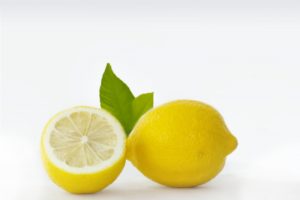今回から、センター試験の第4問に入ります。
第4問の配点:配点40
第4問では、Aは表と説明文、Bでは城の案内を題材として、
Aは、説明文の内容と合う英文を選ぶ問題・・・4問各5点=計20点
Bは、広告文の内容と合う英文を選ぶ問題・・・4問各5点=計20点
となっています。
今回は、第4問のAを扱いますが、
第3問のように細切れにできないので、記事そのものが長くなってしますが、
お許しください。
A【33】~【36】:説明文の内容と合う英文を選ぶ問題
A 次の文章はある説明文の一部である。この文章と表lを読み、下の問(問1~問4)の【33】~【36】に入れるのに最も適当なものを、それぞれ下の①~④のうちから一つずつ選べ。
ー Art may reflect the ways people lived. Researchers have discussed how
art portrays clothing and social settings. One study was conducted to determine if this idea could be extended to paintings featuring family meals. The results of this study help illustrate why certain kinds of foods were painted.
ー The researchers examined 140 paintings of family meals painted from the years 1500 to 2000. These came from five countries: the United States, France, Germany, Italy, and the Netherlands. The researchers examined each painting for the presence of 91 foods, with absence coded as 0 and presence coded as 1. For example, when one or more onions appeared in a painting, the researchers coded it as 1. Then they calculated the percentage
of the paintings from these countries that included each food.
ー Table 1 shows the percentage of paintings with selected foods. The researchers discussed several findings. First, some paintings from these countries included foods the researchers had expected. Shellfish were most common in the Netherlands’ (Dutch) paintings, which was anticipated as nearly half of its border touches the sea. Second, some paintings did not include foods the researchers had expected. Shellfish and fish each appeared in less than 12 % of the paintings from the United States, France, Italy although large portions of these countries border oceans or seas. Chicken, a common food, seldom appeared in the paintings. Third, some paintings included foods the researchers had not expected. For example, among German paintings, 20% of them included shellfish although only 6% of the country touches the sea. Also, lemons were most common in paintings from the Netherlands, even though they do not grow there naturally.
Table 1
The Frequency of Selected Foods Shown in Paintings by Percentage
| Item | USA | France | Germany | Italy | The Netherlands |
| Apples | 41.67 | 35.29 | 25.00 | 36.00 | 8.11 |
| Bread | 29.17 | 29.41 | 40.00 | 40.00 | 62.16 |
| Cheese | 12.50 | 5.88 | 5.00 | 24.00 | 13.51 |
| Chicken | 0.00 | 0.00 | 0.00 | 4.00 | 2.70 |
| Fish | 0.00 | 11.76 | 10.00 | 4.00 | 13.51 |
| Lemons | 29.17 | 20.59 | 30.00 | 16.00 | 51.35 |
| Onions | 0.00 | 0.00 | 5.00 | 20.00 | 0.00 |
| Shellfish | 4.17 | 11.11 | 20.00 | 4.00 | 56.76 |
ー Comparing these results with previous research, the researchers concluded that food art does not necessarily portray actual life. The researchers offered some explanations for this. One explanation is that artists painted some foods to express their interest in the larger world. Another is that painters wanted to show their technique by painting more challenging foods. For example, the complexity of a lemon’s surface and interior might explain its popularity, especially among Dutch artists. As other interpretations are possible, it is necessary to examine the paintings from different perspectives. These are the period in which the paintings were completed and the cultural associations of foods. Both issues will be taken up in the following sections.
(Brian Wansink 他(2016) Food Art Does Not Reflect Reality: A Quantitative
Content Analysis of Meals in Popular Paintings の一部を参考に作成)
問1【33】
For the category “Apples” in this research, a painting with two whole apples and one apple cut in half would be labeled as【33】.
① 0
② 1
③ 2
④ 3
問2【34】
According to Table 1, the paintings from【34】.
① France included apples at a lower percentage than the German ones.
② France included cheese at a higher percentage than the Dutch ones.
③ Italy included bread at a lower percentage than the American ones.
④ Italy included onions at a higher percentage than the German ones.
問3【35】
According to the passage and Table 1, 【35】.
① chicken frequently appeared in the American paintings because people there often ate chicken.
② fish appeared in less than one tenth of the Italian paintings though much of Italy lies next to seas.
③ lemons appeared in more than half on the Dutch paintings as they are native to the Netherlands.
④ shellfish appeared in half of the paintings from each of the five countries because they touch seas.
問4【36】
According to the passage, foods in these paintings can【36】.
① demonstrate the painters’ knowledge of history
② display the painters’ desire to stay in their countries
③ indicate the painters’ artistic skills and abilities
④ reflect the painters’ love of their local foods
第4問A【33】~【36】の解答・・・各5点計20点
・Aには【33】~【36】の4問がありますが、それぞれの解答は下記の通りです。
【33】ー2 【34】ー4 【35】ー2 【36】ー3
第4問A【33】~【36】の解説
・このぐらいの長さの英文だと、トピックをできるだけ早く把握するためにも、
先に、「選択問題」の部分で
・「問題のポイント」
・「説明文のトピックは何か」
の2つを考えながら読んで、その後に「説明文」を読むと、
読解するにもかなり時間が短縮されると思います。
ということで、先に問題の選択肢を解説します。
問1【33】の選択肢
For the category “Apples” in this research, a painting with two whole apples and one apple cut in half would be labeled as 【33】
① 0
② 1
③ 2
④ 3
・問題文からは、「2個と半分のりんご」をどのように「ラベリング」されるのかを問う問題ですが、その「ラベリング」が、table 1 へとつながることは予測できます。
ー選択肢を見てみましょう。
① 0
② 1
③ 2
④ 3
▶︎この選択肢からすると、「ラベリング」は「0」〜「3」の間の数であり、
それに関するだろう段落は、2段落目です。
-coded as 0, coded it as 1 などの表現があります。
※後から2段落目をチェックしましょう。
問2【34】の選択肢
According to Table 1, the paintings from【34】.
① France included apples at a lower percentage than the German ones.
② France included cheese at a higher percentage than the Dutch ones.
③ Italy included bread at a lower percentage than the American ones.
④ Italy included onions at a higher percentage than the German ones.
・これは Table 1「表1」の読み取りです。
ー選択肢の意味をチェックします。
①フランスの(絵画 )は、ドイツより低い割合でりんごを含んだ。
②フランスの(絵画)は、オランダより高い割合でチーズを含んだ。
③イタリアの(絵画)は、アメリカより低い割合でバンを含んだ。
④イタリアの(絵画)は、ドイツより高い割合で玉ねぎを含んだ。
※後から Table 1 で確認しましょう。
問3【35】の選択肢
According to the passage and Table 1, 【35】.
① chicken frequently appeared in the American paintings because people there often ate chicken.
② fish appeared in less than one tenth of the Italian paintings though much of Italy lies next to seas.
③ lemons appeared in more than half on the Dutch paintings as they are native to the Netherlands.
④ shellfish appeared in half of the paintings from each of the five countries because they touch seas.
・Table 1 と段落の内容と合致する英文を見つける問題です。
ー選択肢をみてみましょう。
①アメリカ人はよくチキンを食べるので、鶏肉が絵画に頻繁に描かれた。
②イタリアの大部分は海に隣接しているが魚はイタリアの絵画の10%未満でしか描かれていなかった。
③レモンはオランダ原産なのでその絵画の50%以上でレモンが描かれていた。
④5カ国は海と接しているので、貝は各国の絵画の半分で描かれていた。
▶︎それぞれの国の特徴と、Table 1 との結果を結びつけた考察のようなので、
後からここも確認しましょう。
問4【36】の選択肢
According to the passage, foods in these paintings can【36】.
① demonstrate the painters’ knowledge of history
② display the painters’ desire to stay in their countries
③ indicate the painters’ artistic skills and abilities
④ reflect the painters’ love of their local foods
・今度は、「段落」から読み取れる内容の確認です。
ー選択肢をみてみましょう。
「これらの絵画の中の食べ物は」
-①作者の歴史の知識を示すことができる。
-②作者のその国に滞在しようとする希望を示すことができる。
-③作者の芸術的な技術や能力を示すことができる。
-④作者のその地元の食べ物の愛情を反映することができる。
この問題は、選択肢だけでは判断ができないので、
ポイントになる単語にアンダーラインを引くなどをしておくといいと思います。
【33】から【36】の読み取りから
・上記の選択肢の読み取りから、以下のようなポイントを押さえて説明文をよみましょう。

①【33】では、「ラベリング」の仕方
②【34】では、「Table 1 の読み取り」
③【35】では、「Table 1と国の特徴との関連」
④【36】では、「調査結果による簡潔なまとめ
それでは、本文(説明文)に入ります。
説明文の読み取り、各問題の解説
・ここから先は、
それぞれの段落のポイントと逐語訳を確認し、解説していきます。
第1段落
・一番最初の段落で、トピックとなるキーワード、そして何を説明する文なのかがわかるようにしましょう。ここでは、最後の文章で、「この説明文」の目的を述べています。
ー Art may reflect the ways people lived. Researchers have discussed how
art portrays clothing and social settings.One study was conducted to determine if this idea could be extended to paintings featuring family meals. The results of this study might help illustrate why certain kinds of foods were painted.
ー美術は人々の生活の様子を反映しているかもしれません。研究者は美術が衣装や社会的背景をどのように描写するのかを議論しています。ある研究はこの考えが家庭の食事を扱っている絵画にまで広げられるのかをどうかを確かめるために実施されました。この研究の結果はなぜある種の食べ物が描かれたのかを具体的に例証するのに役立つかもしれません。
第2段落・・・【33】の問題へ
・第2段落では、その「研究」がどのように実施されたかが示されているはずで、
ここで、その食べ物の範囲、ピックアップした国、そして「絵画の中の食べ物」をどのように「ポイント化(ラベリング)」しているのかが説明されています。
▶︎ポイントとなる部分に対して、黄色い下線を引きましたので参考にしてみてください。また「ポイント化」の部分は赤線を引きました。
ー The researchers examined 140 paintings of family meals painted from the years 1500 to 2000. These came from five countries: the United States, France, Germany, Italy, and the Netherlands. The researchers examined each painting for the presence of 91 foods, with absence coded as 0 and presence coded as 1. For example, when one or more onions appeared in a painting, the researchers coded it as 1. Then they calculated the
percentage of the paintings from these countries that included each food.
ー 研究者は1500年から2000年の間の家庭の食事を描いた140の絵画を調査しました。これらはアメリカ、フランス、ドイツ、イタリアとオランダの5カ国からのものでした。研究者は91種類の食べ物が絵画にあるかどうかを調査し、ない場合は0、ある場合は 1 と記すことにした。例えば、1個またはそれ以上の玉ねぎが絵画の中にあった場合は、研究者は 1 と記したのです。それからそれぞれの食べ物を含む各国の絵画からのパーセンテージを計算しました。
◎【33】の問題について
・For the category “Apples” in this research, a painting with two whole apples and one apple cut in half would be labeled as 【33】
▶︎「2個のりんごと半分にカットされたりんご」の記し方となります。
上記の赤線の説明から「りんごがない場合は→0」「りんごがある場合(個数関係なく)→1」となるので、ここでは「ある場合」に該当します。
ここから、【33】の正解は、② 1 となります。
第3段落・・・【34】【35】の問題へ
・最初に Table 1 とあり、この表が「何の表」であるのかが簡潔に示されています。この「表」からは、「3つ発見(調査結果)」があるようで、それが順に述べられています。
ー Table 1 shows the percentage of paintings with selected foods. The researchers discussed several findings. First, some paintings from these countries included foods the researchers had expected. Shellfish were most common in the Netherlands’ (Dutch) paintings, which was anticipated as nearly half of its border touches the sea. Second, some paintings did not include foods the researchers had expected. Shellfish and fish each appeared in less than 12 % of the paintings from the United States, France, Italy although large portions of these countries border oceans or seas. Chicken, a common food, seldom appeared in the paintings. Third, some paintings included foods the researchers had not expected. For example, among German paintings, 20% of them included shellfish although only 6% of the country touches the sea. Also, lemons were most common in paintings from the Netherlands, even though they do not grow there naturally.
▶︎上記の段落で示されている表の部分を「青い背景色」にしています。
Table 1
The Frequency of Selected Foods Shown in Paintings by Percentage
| Item | USA | France | Germany | Italy | The Netherlands |
| Apples | 41.67 | 35.29 | 25.00 | 36.00 | 8.11 |
| Bread | 29.17 | 29.41 | 40.00 | 40.00 | 62.16 |
| Cheese | 12.50 | 5.88 | 5.00 | 24.00 | 13.51 |
| Chicken | 0.00 | 0.00 | 0.00 | 4.00 | 2.70 |
| Fish | 0.00 | 11.76 | 10.00 | 4.00 | 13.51 |
| Lemons | 29.17 | 20.59 | 30.00 | 16.00 | 51.35 |
| Onions | 0.00 | 0.00 | 5.00 | 20.00 | 0.00 |
| Shellfish | 4.17 | 11.11 | 20.00 | 4.00 | 56.76 |
ー表1は選ばれた食べ物について絵画でのパーセンテージを示しています。研究者たちはいくつかの調査結果を議論しました。まず第1に、各国の絵画には研究者が予測していた予測していた食べ物がありました67。貝はオランダの絵画には最もよく扱われていて、それはオランダの国境のほとんど半分が海に接しているので予期されていたことです。2番目は、研究者が予測していた食べ物が含まない絵画もありました。アメリカ、フランスやイタリアの国境の大部分は海に隣接していますが、貝と魚のそれぞれはそれらの国の絵画の12%未満でしか描かれていませんでした。もっと一般的な食べ物である、鶏肉は絵画には滅多に現れていませんでした。3番目に、研究者が予期していなかった食べ物も絵画に含まれていました。ドイツの絵画の中では、ドイツのたったの6%しか海に接していないですが、20%の絵の中に含まれていました。また、レモンはオランダで自生さえもしていませんが、そこの絵画の中では一番多く扱われていました。
◎【34】と Table 1 について
・【34】の選択肢を1つ1つチェックしていきましょう。
(選択肢に関する数値の部分に黄色いマーカーをつけています。)
①フランスの(絵画 )は、ドイツより低い割合でりんごを含んだ。
②フランスの(絵画)は、オランダより高い割合でチーズを含んだ。
③イタリアの(絵画)は、アメリカより低い割合でバンを含んだ。
④イタリアの(絵画)は、ドイツより高い割合で玉ねぎを含んだ。
▶︎それぞれについて
①フランスのりんご:35.29 ドイツのりんご:25.00
→表と「選択肢①」の内容が合わないので、❌
②フランスのチース:5.88 オランダのチーズ:13.51
→表と「選択肢②」の内容が合わないので、❌
③イタリアのパン:40.00 アメリカのパン:29.17
→表と「選択肢③」の内容が合わないので、❌
④イタリアの玉ねき:20.00 ドイツの玉ねき:5.00
→表と「選択肢④」の内容が合うので、⭕️
ここから【34】の解答は、
④ Italy included onions at a higher percentage than the German ones.
となります。
◎【35】と Table 1 について
・【35】の選択肢を1つ1つチェックしましょう。
①アメリカ人はよくチキンを食べるので、鶏肉が絵画に頻繁に描かれた。
②イタリアの大部分は海に隣接しているが魚はイタリアの絵画の10%未満でしか描かれていなかった。
③レモンはオランダ原産なのでその絵画の50%以上でレモンが描かれていた。
④5カ国は海と接しているので、貝は各国の絵画の半分で描かれていた。
▶︎それぞれについて
①アメリカのチキン:0.00
→チキンはアメリカで扱われていないので、❌
②イタリアの魚:4:00
→10%未満で「選択肢」の内容とあっているので、⭕️
③オランダのレモン:51.34
→数値は合致(50%以上)していますが、「オランダの原産」の部分が違うので、❌
(第3段落目の最後に「レモンはオランダで自生さえもしていない」とあります。)
④5カ国の貝の割合 米:4.17 仏:11.11 独:20.00 伊:4.00 蘭:56.76
→半分程度になっているのはオランダだけなので、❌
ここから、【35】の解答は、
② fish appeared in less than one tenth of the Italian paintings though much of Italy lies next to seas. となります。
第4段落・・・【36】の問題へ
・最後の段落はどうでしょうか。
最初に「以前の研究と比べると」と記されているので、その比較の結果から
導き出したものが書かれていると思います。
ーComparing these results with previous research, the researchers concluded that food art does not necessarily portray actual life. The researchers offered some explanations for this. One explanation is that artists painted some foods to express their interest in the larger world. Another is that painters wanted to show their technique by painting more challenging foods. For example, the complexity of a lemon’s surface and interior might explain its popularity, especially among Dutch artists. As other interpretations are possible, it is necessary to examine the paintings from different perspectives. These are the period in which the paintings were completed and the cultural associations of foods. Both issues will be taken up in the following sections.
ー 以前の研究とこの結果を比べて、研究者は食べ物の美術(絵画)は現実の生活と描き出したものでは必ずしも限らない、と結論づけました。研究者は、この結果に対していくつかの説明を示しました。1つは、画家はより広い世界の中で自分の興味あるものを表現するために食べ物を描いた、というものです。もう1つは、画家はより挑戦的な食べ物を描くことにより自分の技術の高さを示したかった、というものです。例えば、レモンの表面と内部の複雑さは、その人気の高さを説明するかもしれません、特にオランダの芸術家の中では人気が高かったのですが。他の解釈も可能ですが、様々な視点から絵画を調べる必要があります。これらが、絵画が完成された時代であり、文化的な食べ物との関連なのです。この両方の問題は次の部分で取り上げられます。

◎【36】について
・【36】の選択肢を1つ1つチェックしましょう。
「これらの絵画の中の食べ物は」
-①作者の歴史の知識を示すことができる。
-②作者のその国に滞在しようとする希望を示すことができる。
-③作者の芸術的な技術や能力を示すことができる。
-④作者のその地元の食べ物の愛情を反映することができる。
▶︎それぞれについて
①「歴史の知識」についての言及はありませんので、❌
②「滞在しようとする希望」についての言及はありませんので、❌
③「芸術的な技術や能力」については、「もう1つの説明」で記されています。
– Another is that painters wanted to show their technique by painting more challenging foods.ここから、⭕️
④「地元の食べ物の愛情」についての言及はありませんので、❌
ここから、【36】の解答は、
③ indicate the painters’ artistic skills and abilities となります。
長かったですが、
これで、第4問Aは終わります。
次の問題もチェックしたい方は下記をクリックしてください。





コメント